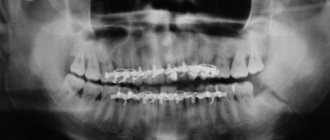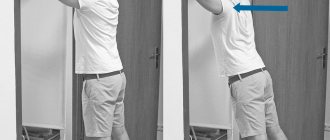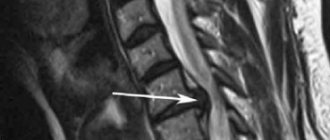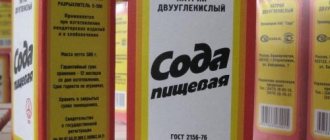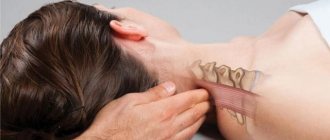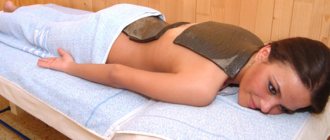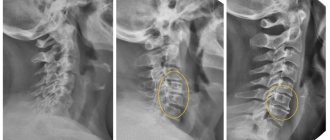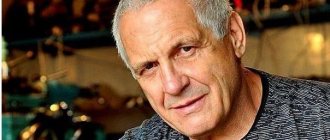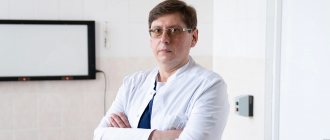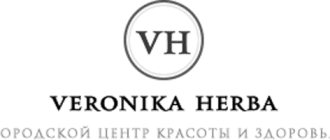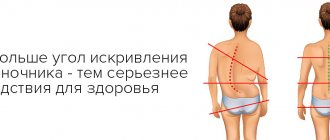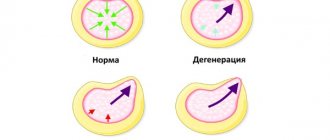Gitta micromovement gymnastics is one of the directions in exercise therapy, the use of which is permissible even with exacerbation of osteochondrosis. The essence of the manipulations is that each exercise is performed with a minimum amplitude (hence the name). That is, the work goes on in the process, but without pain or discomfort - that is, within the range acceptable by the body.
Who is Vitaly Demyanovich Gitt
Gitt Vitaly Demyanovich is a chiropractor who has developed his own system for working out joints in the musculoskeletal system.
Thanks to the system of micromovements, it is possible to overcome the disease and significantly improve the condition of the spine and other areas of the body.
Gitta's treatment method incorporates both traditional manual therapy techniques, as well as massage developed in-house, and micro-movement gymnastics.
Such an integrated approach allows for the most effective impact on ODA. Accordingly, there is influence from several directions at once, which allows you to achieve significant results:
Causes of the disease
The first step on the path to recovery from arthrosis is the correct diagnosis. It is important to establish the cause of the disease. It could be:
- Flat feet, sole deformities;
- Severe curvature of the lower leg;
- Obesity;
- Intensive sports, including professional sports;
- Work that requires constant standing or standing;
- Suffered leg injuries - these can be bruises, sprains, torn ligaments, fractures;
- General hypothermia of the body or frostbite of the extremities;
- Disturbances in the functioning of endocrine organs;
- Polyarthritis.
In addition, hereditary predisposition, affecting the structure of bones and joints, can play a big role in the occurrence of arthritis. The shoes we wear play an important role. If it squeezes the fingers, then sooner or later the person will develop arthrosis or arthritis. This is especially true for women who constantly wear high heels.
The essence of the technique
Micromovements are deflections in the affected area not at a maximum, large angle, but at a small amplitude. In this case, the joint is not loaded, and therefore movements are carried out without coercion, pain or discomfort. Thanks to this effect it is possible to:
- Replenish lost interarticular fluid in partial volume;
- Restore the shock-absorbing properties of joints and cartilage;
- Increase nutrition to the affected area;
- Gradually destroy calcium deposits on the joints affected by the disease;
- Reduce pain syndrome;
- Increase joint mobility.
This technique can be used both for osteochondrosis of the spine and in other areas affected by degenerative processes.
Indications
Micromovement gymnastics is used for:
- Osteochondrosis;
- Coxarthrosis;
- Arthrosis of various types;
- Slouch.
There are varieties of exercises for the spine, knee, hip, ankle, and elbow joints.
There is a complex that is used after childbirth to strengthen the abdominal muscles, as well as the thoracic region and arms.
Basic complexes
But for treatment, basic complexes are still used, aimed at treating joints affected by osteochondrosis. In general, it is enough to practice 2-3 exercises and you will get a good result.
The only “but” is the regularity of execution. That is, some types of actions must be carried out hourly.
For the knee joint
The following exercises are done for the knee joint:
- Sit on a high bed or other surface and place a pillow under your hips so that you can sit comfortably. The legs should hang down, forming a right angle with the hips. Do small swings of your legs back and forth for 5 minutes. The exercise is performed once every 1 hour.
- Sit on a chair and place your legs a little further so that the angle between your shins and thighs is about 100 degrees. Next, you need to sharply raise and lower the toe of your foot. After this, pause for 5 seconds and do the same with the other leg.
These two exercises work perfectly on the knee joint without causing an exacerbation of the disease.
Cervical
For the cervical spine, it is better to do the exercise from a sitting or lying position, depending on the type of manipulation. The following exercises are suggested:
- Lie on your back, placing a small cushion under the back of your head to relax your neck muscles as much as possible. You need to start shaking your head from side to side in a small amplitude, as if you were saying “no.” Do this 30 times or more, depending on the level of preparation and personal capabilities. This manipulation is carried out 2 times a day.
- Small amplitude head nods are performed from a sitting position with a straight back. It is advisable not to overstrain your neck during performance. The movement resembles agreement, as if a person is saying “yes.” The complex is carried out 2 or more times a day for 2 minutes (possibly hourly).
- The first exercise is done, but from a sitting position. Also 2 minutes twice or more times a day (up to every hour).
- Tilts of the head from side to side (Gitt called it “Ay-ay”) from a sitting position. It is also performed with low amplitude every hour for 2 minutes.
For the lumbar region
The lumbar region is worked out with the following movements:
- The movement is done from a lying position. Body, legs straightened. The hands are placed under the buttocks for support. The simplest option is to bend your leg and pull it towards your body and then return it to its place, and then do the same movement with the other leg. 20-50 repetitions are expected depending on the physical capabilities of the patient. It is expected to be performed at least 1-2 times a day.
- The exercise is performed from a lying position. The body and legs are straightened, and the palms are under the buttocks for support. Bend your legs at an angle of 45 degrees and lift them as far as possible to your chest, without lifting your buttocks from your hands. Same as the previous one - 20-50 repetitions, 1-2 sets per day
- To strengthen the previous exercise, you can raise your legs and lift your buttocks away from your hands by 10 cm. 20-50 repetitions, 1-2 sets.
It is noteworthy that Gitt believes: only working out the abs can give a good effect for lumbar osteochondrosis, while exercises for the back only overstrain the department and, accordingly, worsen the patient’s condition.
For the thoracic region
The following exercises are great for the thoracic region:
- Flexion and extension of the back in the thoracic region. To do this, you need to sit straight on a chair and keep your back straight. Using light movements with minimal amplitude, straighten your back, and then relax. Do this for 2 minutes every hour.
- Lie on your back and place a soft cushion under your thoracic region all the way to the base of your neck along your spine. Raise your arms up and swing: the left one up above your head, and the right one down, and then change sides and the right one up, and the left one down. Do alternately without stopping for about 2 minutes. In addition to the beneficial effect on the thoracic region, the shoulder girdle and elbow joint are also restored.
For the hip joint
To work the hip joint, you need to take into account the degree of damage to the area. The process uses a roller. The more severe the disease, the thicker the roller should be. The following movements are performed:
- Lie on your back. The pillow under your head can be any size. The size of the roller is determined by the degree of hip disease. Place it under your knees. Next, move your knees in a small amplitude to the sides and inwards, parallel to your toes.
- Turn over and lie on your back. Place a cushion under your feet so that your toes do not rest on the surface. If necessary, another roller can be placed under the lower abdomen. Start light rocking movements with your pelvis from side to side.
- The first exercise with swinging your knees in and out can also be done from a sitting position. It is important to maintain a straight back position and a 90-degree angle between the shin and thigh.
- From a sitting position, as in the previous exercise, you need to raise your heel, standing on your toes, and then lower it. Between movements, take a 5-second break and use the other leg.
The legs can be placed at any width to make it comfortable. You can carry out movements as much as you like.
Warm-up
Doctors advise listening to the sensations that arise during training. If after a certain exercise the patient feels significantly better, then it should be performed more often. This also applies to micromovements for warming up:
- sit on a stool, straighten your back, relax, breathe evenly and deeply;
- smoothly raise your shoulders 1-2 cm, hold them slightly in this position, lower them;
- slowly move your shoulders 2-3 cm, first forward, then back;
- place your hands on your knees, palms down, very slowly swing your elbows from side to side;
- smoothly, barely noticeably, shake your shoulders, as if performing circular movements.
Over time, a person is able to exercise in such a way that others simply do not notice it. And at this time, blood is actively flowing to the vertebrae and discs, and tissues affected by osteochondrosis are being restored. After a productive warm-up, you can begin to perform a basic set of exercises.
Are there any contraindications
Contraindications to such actions are conditions such as:
- Acute inflammation;
- Intense pain syndrome;
- Recent surgeries and injuries;
- Bleeding;
- Feverish conditions;
- Acute infectious and inflammatory diseases.
Otherwise, the use of this technique in accordance with the recommendations of the author of the system is excellent even for severe degrees of joint diseases.
Efficiency and reviews
The effectiveness of gymnastics gives excellent results, allowing over time to restore the mobility of the affected area without pain. In this case, it is important to perform the movements every day in accordance with the recommendations of the chiropractor.
If we talk about specific results, the most positive responses were left by those who performed the exercises exactly and also underwent a course of manual therapy. At the same time, overall health improved.
There have been cases of severe joint pathologies when the patient regained the ability to move. But given the specifics of the system, one cannot expect quick results from the method.
Gitta gymnastics complex in our video:
Classes with a specialist
In the medical centers of V.D. Gitt, patients with cervical osteochondrosis of any severity are trained. And if patients with the initial stage of the pathology can soon practice independently, then with its recurrent form this is strictly prohibited. The fact is that advanced and complicated osteochondrosis is characterized by a strong proliferation of bone tissue. Improper execution of micromovements will cause damage to tendons, ligaments, muscles, nerves, and soft tissues. Therefore, specialist supervision during training is necessary. How patients perform exercises in medical centers:
- The doctor tilts the patient's head first to one, then to the other shoulder. If the ward is a child or a weakened patient, then the doctor manipulates only his hands. Head tilts of physically strong people are made with the doctor’s forearm;
- the doctor places his palm under the patient’s chin, as if fixing it in one position. At this time, the patient tends to turn his head in different directions, trying to overcome resistance;
- The patient sits on a stool, he is relaxed, slightly flexes and extends his neck. The doctor tilts the patient's head approximately 1-1.5 cm with a sharp movement;
- under the supervision of a specialist, the patient tilts his head and slightly turns it to the side, making a limited rotational movement.
During training, the vertebrae may crunch and clicks may be heard periodically. Something happens that is unacceptable during home exercises. Doctors thoroughly know the anatomical structure of the cervical spine; first, they study X-ray images of the patient’s neck. Therefore, crunching and clicking only indicate the effectiveness of the micromovement technique.
Rehabilitation doctors at the V.D. Gitta Medical Center explain to patients in detail the essence of the upcoming therapy. The concept of the fundamental difference between the methods of physical therapy and performing micromovements helps patients not to harm themselves during exercise.
